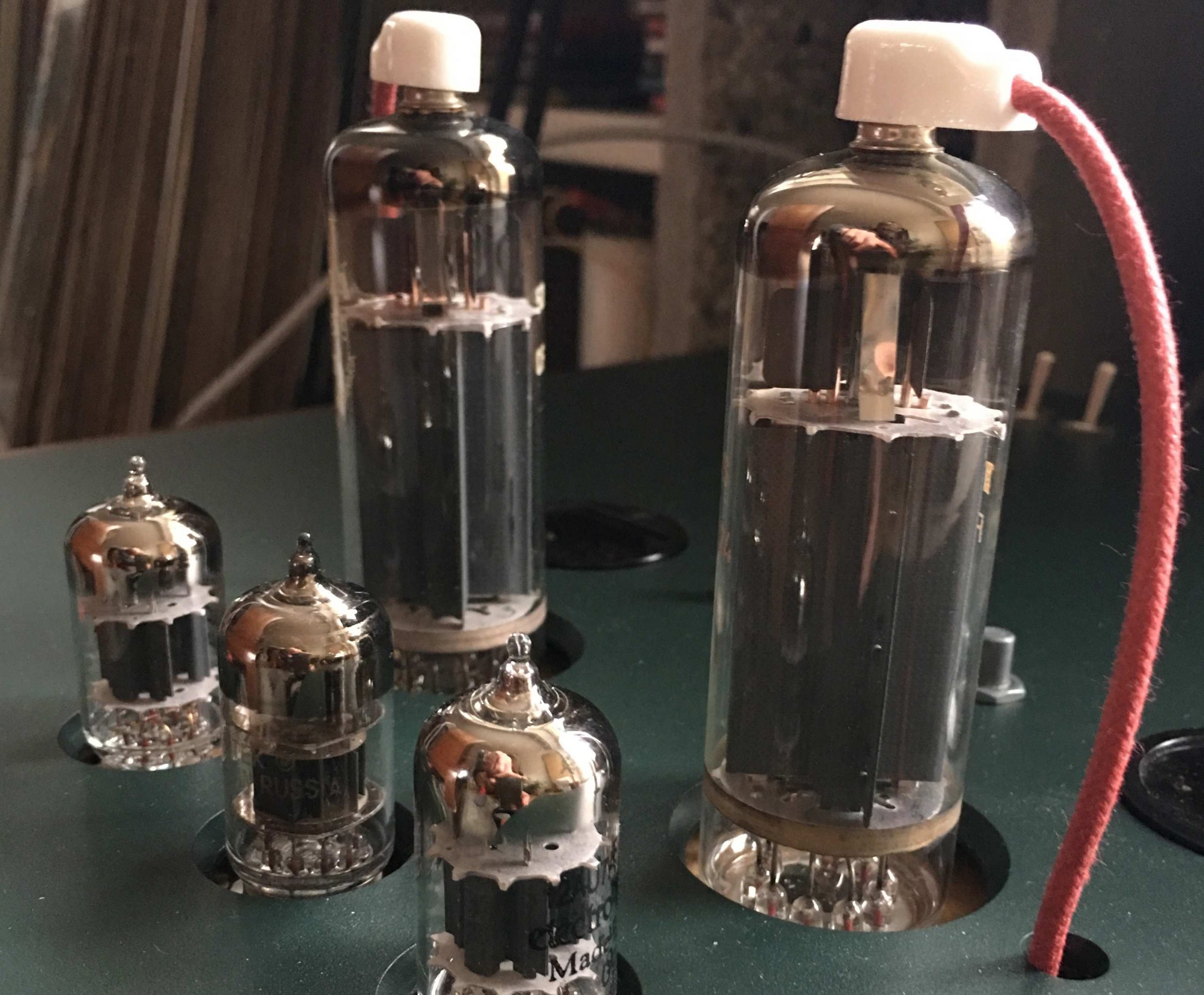
Back to tubes
The chip amplifier
For my loudspeaker work I often use a very simple chip-based amplifier to subjectively evaluate characteristics like spectral balance and relative phase between different drivers. Assisted by simulation and measurements, of course. This simple amplifier sounds the same every day, and shows little or no warmup-effects. I balanced it’s sound via careful selection of materials, towards a neutrality appropriate for the job. Interestingly, it exposes loudspeaker issues better than any other transistor amplifier I tried.
Business was intense last year, and in order to continue work after returning from the workshop in the evenings I set up a speaker project at home. Wired to a copy of said chipamp. So I finally kept listening with this simple thing most of the time last year, forgetting about it’s harsh sound after a while. Too tired to really enjoy music, I missed nothing and admired its ability to show progress on speaker projects.
Usually, with advanced enough loudspeaker projects, I care for linear impedance and change to high quality tube amplification. Not this year.
SET sound
Instead, I took the chance to listen to a friends system while single person visits were allowed around Christmas.
He uses a Kondo Ongaku KSL2 SET amplifier to drive his first generation Betahorns. After his change of speaker wires and output tubes (excellent Elrog now ) I was curious to experience that upgrade.
For easier comparison I brought my small digital SD card player (Soundaware A1) plus DAC (modified Lampizator) and related cables. Just what I was using lately to evaluate sound with speaker projects.
What a revelation.
Finally tracks that I assumed to be sometimes distorted sounded clean. Plus easy separation of instruments and voices in dense mixes. Overall, the sound was much cleaner and diverse musical lines easier to follow. This makes an important difference to the musical experience. Strong sounds in the foreground do not dominate the rest of the musicians. All is presented in a more complete, balanced and colorful way. No, not due to compression.
Back home I immediately rewired my own SET to the (now 3rd gen) Betahorns – and yes! This is a very different sound to the chipamp. Often tube amp sound is called “soft on transients”, “warm” or “fuzzy” compared to sand amps. Not necessarily so. The Ongaku as well as my own SET sound neutral, with good woofer control and simply more realistic sound overall. And the chipamp does not sound bright. It sounds distorted.
Examples
Around 3:20-3:24 into the first track of “Verismo“, Anna Netrebko sings a high note that always sounded distorted via the chipamp. Via headphones, just like with the SET amps, no sign of distortion. The climax is reproduced with intense, gorgeous sound.
On “Amazing Grace”, Aretha Franklin is captured much closer than the choir and some instruments in the background. Over the chipamp, that background sounds like a large mass of people singing. With poor separation of individual voices. Both tube amps easily separate different background voices. They sound much cleaner and more colorful, less like “modulated grey noise”. I was astonished that even Aretha is presented with more detail and clarity. Understanding the lyrics, and small variations in her voice, are as natural as can be.
Conclusion
So, if it is due to higher distortion that tube amplifiers sound better, I can live with that. But for me it seems as if they actually distort less than some transistor designs. Yes, of course I listen to high-end transistor designs as well. But bought none for years … and good reason.
During the initial development of TestHiFi I browsed through some 160 papers about distortion, mostly AES and similar complex works. Read about halve in detail. One that seemed to describe my listening experience best can be found HERE. See for example page 49-51 for a description of what might cause some high feedback amplifiers „grainy“ sound. Yes, there are certainly better sand amps today. But … they still sound compressed on high frequency transients and veiled in comparison to good tube amps. At least for my ears, and with my speakers.
Final word
I would like to encourage you to experience a high quality SET amplifier yourself.
Of course, the speakers used should be easy to drive. This is what motivated me to spend decades working on better quality horn systems. After my initial exposure to SET sound.
Btw, please do not forget loudspeaker impedance’s influence when using high output impedance amplifiers! See my blog about this HERE.
Either the speakers are tuned to sound neutral with the amplifier of choice, or they should give the amplifier a chance to sound neutral with them 🙂